This Sourdough Starter is pretty darn easy to do and a great option for delicious homemade baked goods! A sourdough starter doesn’t have to be a chore, and the end result is worth the patience in the beginning. If you like homemade treats try my Sourdough Pretzels!
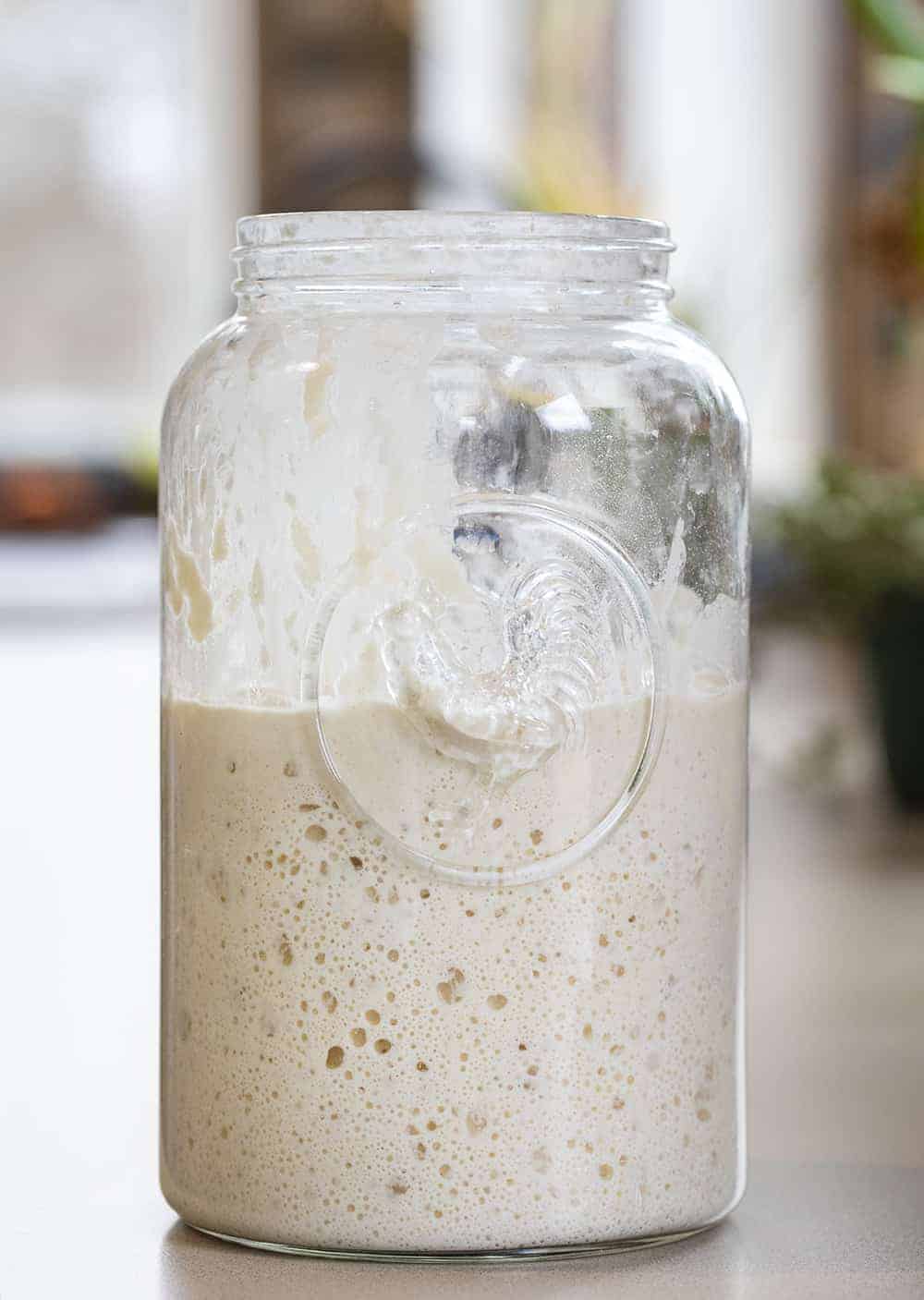
Sourdough Starter
I have to start out by saying that this is how *I* do a starter. I have watched every expert under the sun and read every book and let me tell you something… they are all different. So I have been testing and testing and retesting and using life experience to determine what works best for me. Well, I finally decided on what worked best for me, and it could not be easier and straight forward. The ingredients are simple: flour and water. And, with just two measurements to remember, the feeding is a piece of cake (or should I say bread😉) as well!
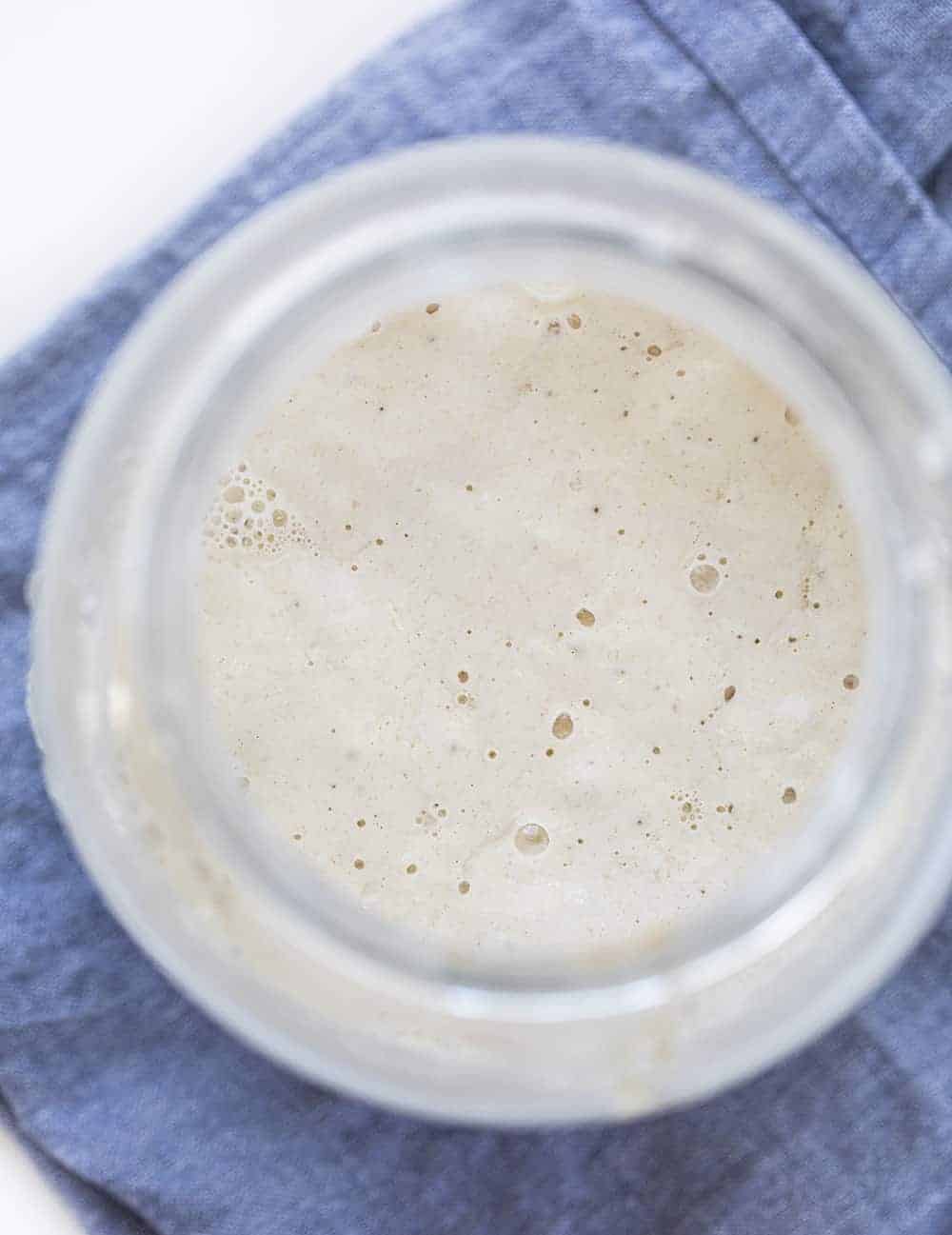
Getting your Sourdough Starter Started
Now if you want to bring science into it, the type of flour and type of water you use are important. They can produce a better product. But I am here to tell you that you can absolutely use all-purpose bleached flour from Dollar General and it will still be ok. Make sure you have the following materials and ingredients on hand:
- Jar & Lid – I prefer glass, you don’t want to use metal or plastic. If you don’t have a lid use a paper towel and rubber band. A good size jar to have on hand for a sourdough starter is a quart (32 ounces) or something close to that capacity.
- Flour – I prefer organic unbleached all-purpose, but also love whole-wheat and bread flour. Or, give rye flour a try.
- Water -Purified is best. Have chlorinated tap water (as most people do)? You can use bottled water or just set the water out uncovered for 24 hours before using it to feed your starter. This allows the chlorine to evaporate so it won’t kill the wild yeast.
That’s it for supplies! Now, let’s get to making the starter.
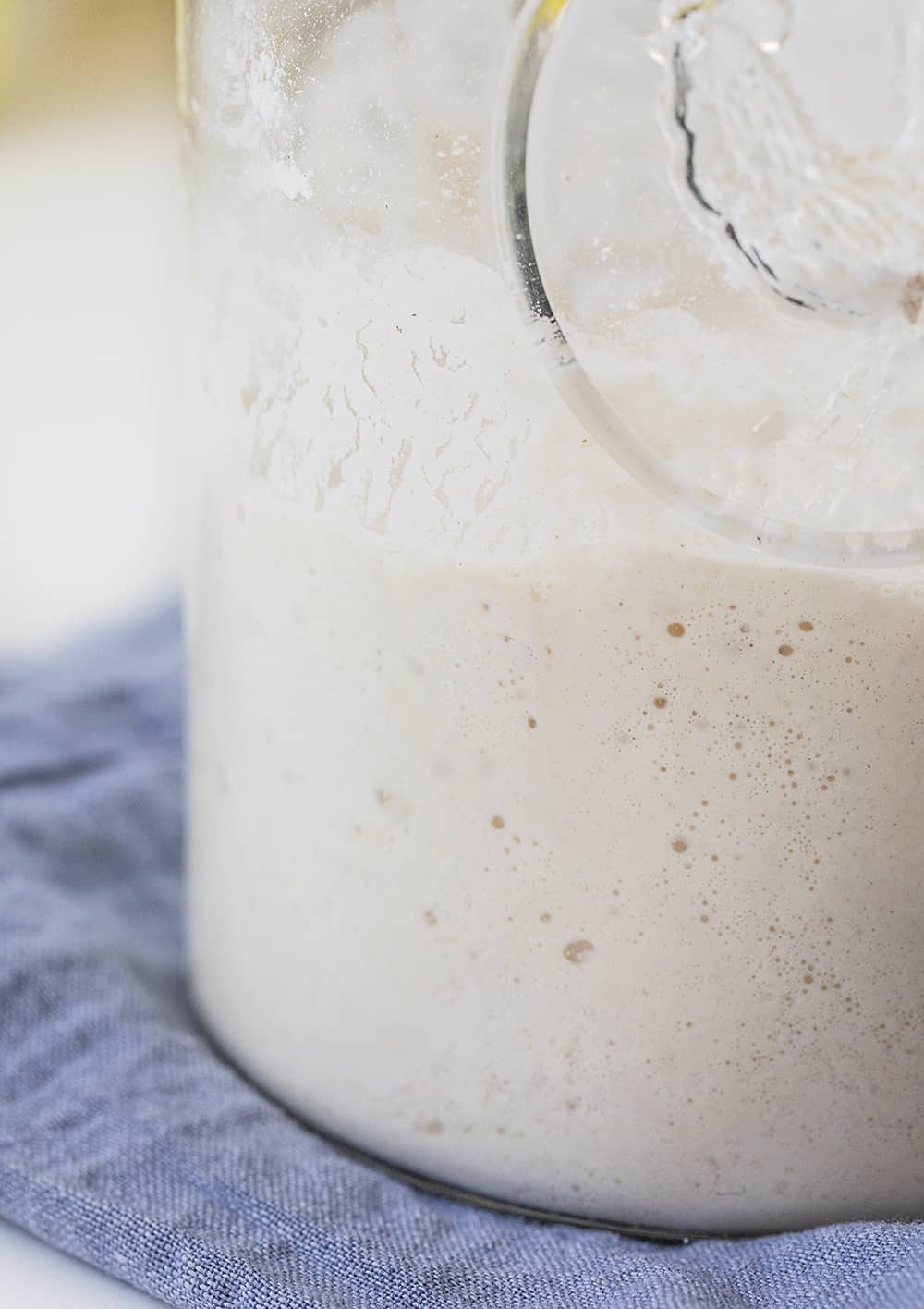
How to Make a Sourdough Starter
Remember these amounts: 1/2 cup flour and 1/4-1/3 cup water. These are the only measurements you will need to remember throughout this entire process of creating your sourdough starter. And trust me, you will use those measurements a lot with all the ‘feeding’, going on! After all, the goal is to get those microorganisms to work for that sour and fermented flavor that sourdough is known for.
To begin, add the flour and water to a jar and stir well. Try not to use a metal spoon. After all, Grandma said she always uses the handle of her wooden spoon to stir. Now gently cover the jar (do not seal it closed) and let it sit in a warm place (70°F is best) for 24 hours. The best option for a cover is a paper towel and rubber band. Or, just remember to keep the jar lid loosely sealed. Try to keep it in an area of your house that is somewhat warm. Very cool rooms tend to slow the action of a starter. Wait 24 hours before checking the mixture.
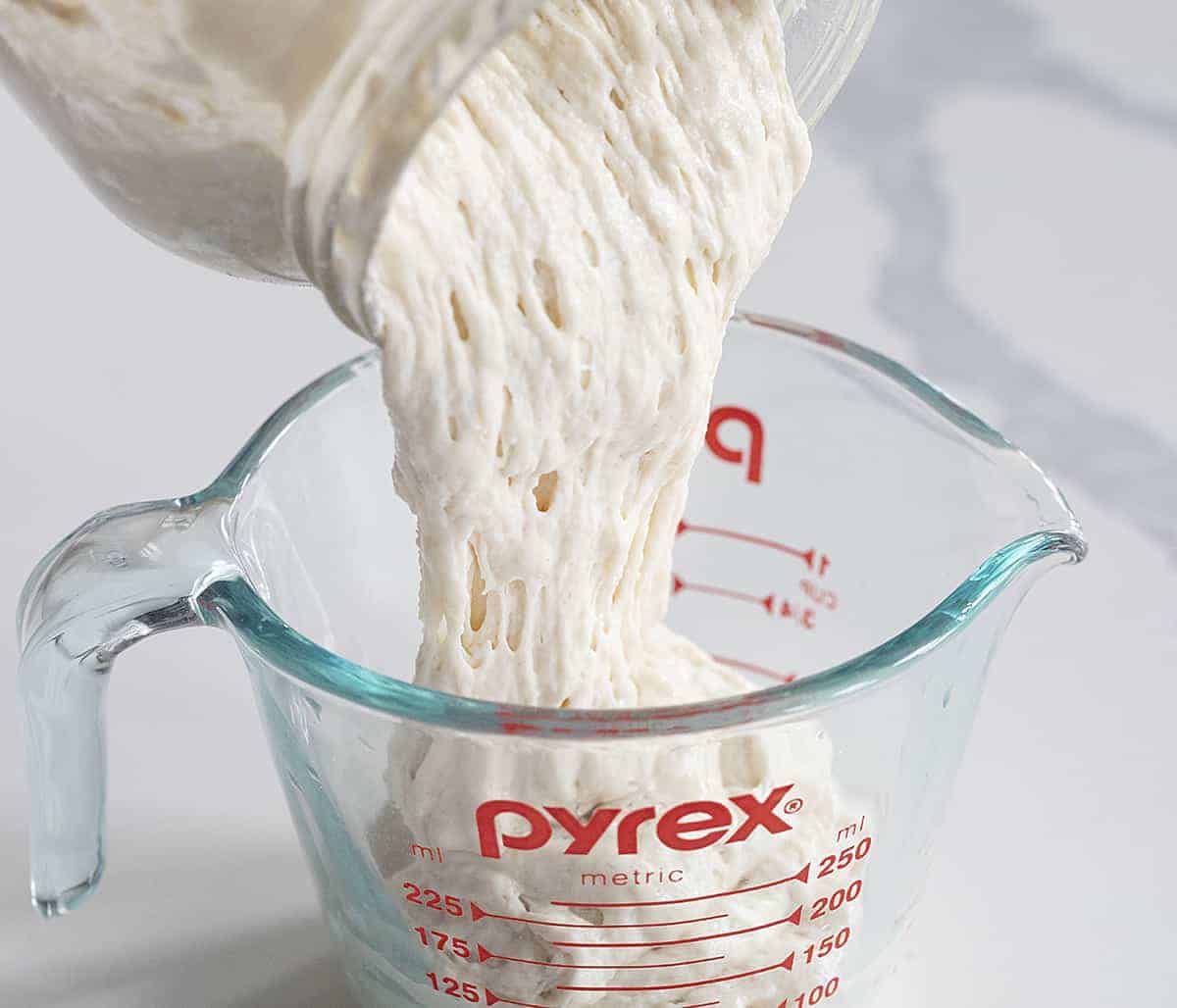
‘Feeding’ the Sourdough Starter
With sourdough starters, you will hear the term ‘feeding’. This is simply adding the flour and water to the mixture to keep the microorganisms working. Remember the measurements I told you to get ingrained in your brain? The 1/2 cup flour and 1/4-1/3 cup water is all you will need throughout the ‘feeding’ process.
Day 2: After 24 hours, check the mixture for bubbles. If you see bubbles, add the flour and the water, mixing it well, and let it sit for the next 24 hours. If you don’t see bubbles, do not get discouraged! It sometimes takes a couple of days for the science of it all to work. Just wait another day (or even two) until the first feeding.
Day 3: After another 24 hours, check for bubbles. If you do see bubbles, remove half of the starter, add the 1⁄2 cup flour and 1⁄4-1/3 cup water and stir thoroughly. Let sit 24 hours. Oh, and don’t get rid of the starter you removed! I will give you some ideas on how to use this in the end.
For the third feeding, remove half of the starter (but don’t throw it out!), and feed with 1⁄2 cup and 1⁄4 cup water, stirring thoroughly. Let sit 24 hours. (And yes, you can begin a new starter with the discard! Try adding a new kind of four! Or simply use to make crackers or pancakes.)
On days 4, 5, 6 you can feed it 2 times a day with those measurements that are sure to be memorized at this point😀. Continue this routine (discarding before feeding) until the starter is consistently bubbling and doubling in size within 8 hours of each feeding.
It is now ready to use for a perfect Sourdough Bread!
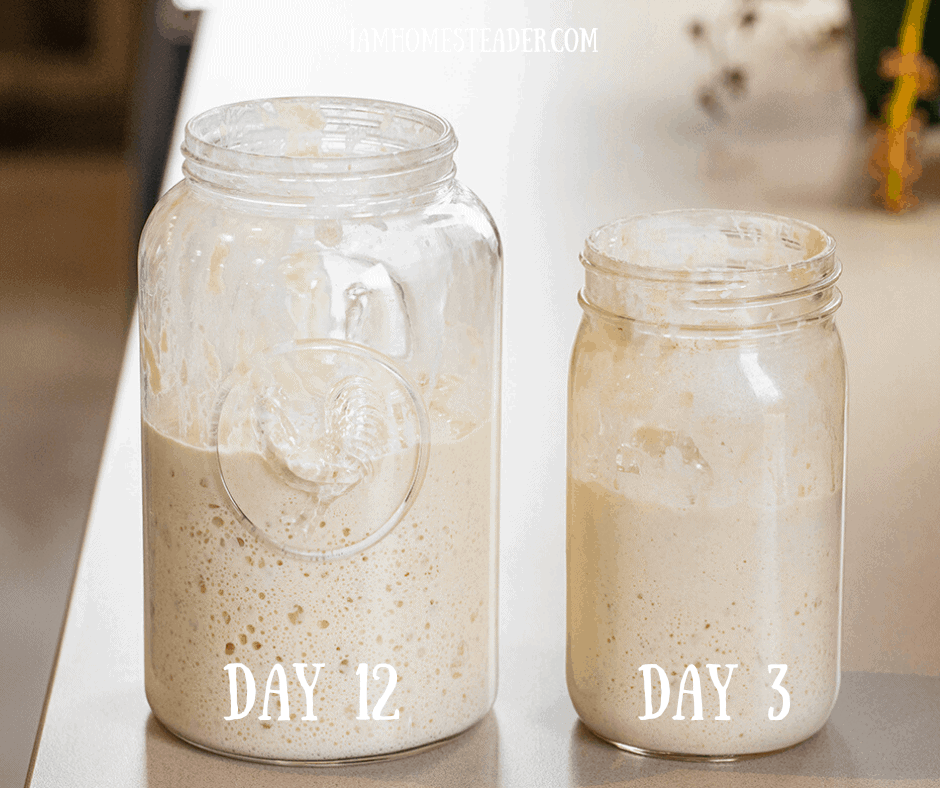
How to Store a Sourdough Starter
After all the feeding and you know you have a strong, active starter, you can store the starter in the refrigerator and feed it about once per week. When you plan to use the starter, pull it out of the refrigerator 24 hours in advance to feed it and allow it to warm up and grow.
These starters get better with age, so don’t think you have to use it right away! Sourdough starters are hearty, so they last quite a while. But, like all living things, it can get ‘sick’ or go bad. If it turns pink, red, moldy, or gets a really putrid smell, throw it out. After all, you now know how to start again!
What Flours Can You Use in a Sourdough Starter?
All grain-based flours will work beautifully in a starter. A few examples are:
- Rye
- Bread Flour
- Rice
- Whole Wheat
- Einkorn
Truesourdough.com has a great comprehensive guide to flours.
Vanilla and Bean has a great guide to Gluten-Free sourdough starter.
What to do with the Discard?
As I said, don’t throw out the sourdough starter that you remove each feeding time to make room for the starter to rise. Just make sure your sourdough starter is room temperature (about 70°F) before using it in baking. Here are some ideas on how to use (and enjoy) the excess sourdough starter.
- Sourdough Bread (not until day 6 or 7)
- Sourdough Pancakes (seriously SO GOOD!)
- Sourdough English Muffins
- Sourdough Brownies
- Sourdough Pretzels
- Cinnamon Rolls (the best!)
- Banana Bread
- Sourdough Crackers (like saltines)
- Sourdough Chocolate Chip Cookies
- Sourdough Pasta Noodles
As I mentioned, this is how *I* make a starter. King Arthur recommends 1 cup flour and 1/2 cup water and they suggest you weigh ingredients with a scale. (This is the same equivalent that I use, just doubled.) Pro Home Cooks has a great free downloadable Sourdough guide for those who really want to understand the science behind it.
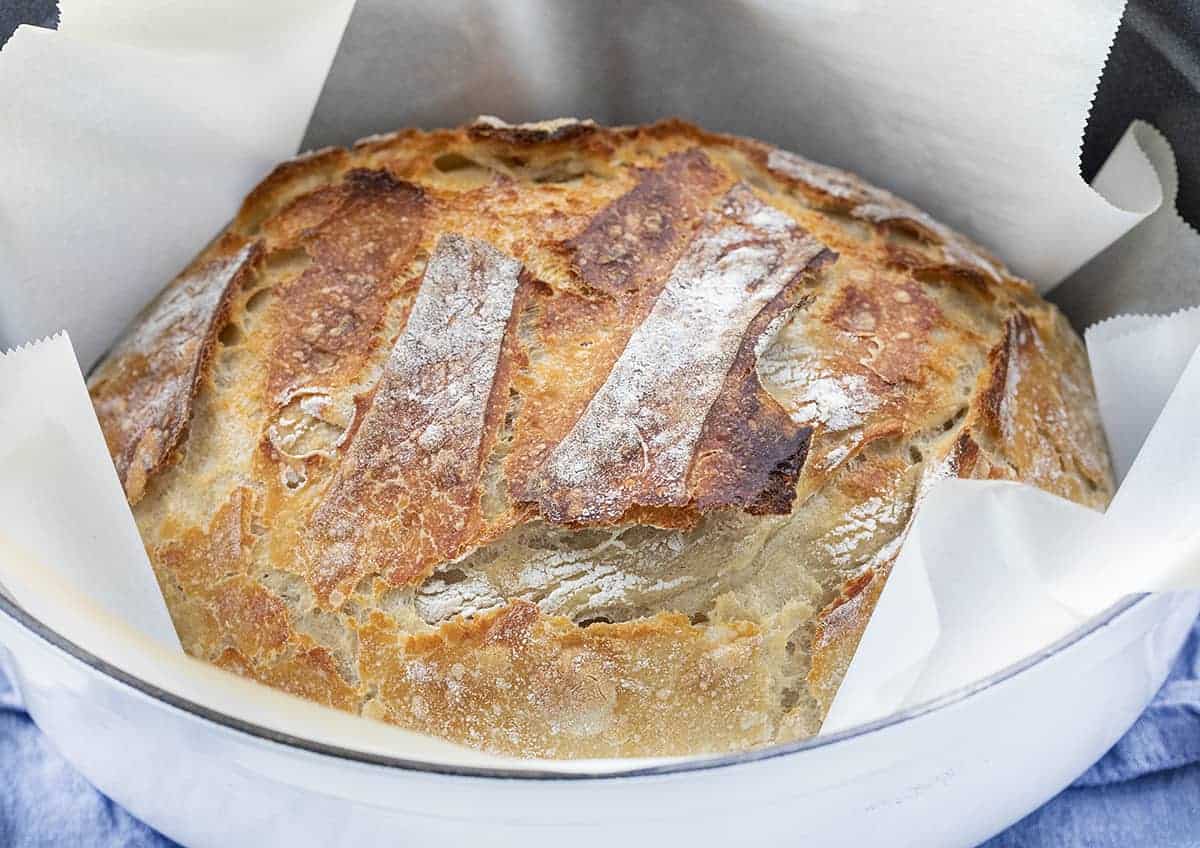
Here is the recipe for Simple Sourdough Bread!
More Sourdough Recipes
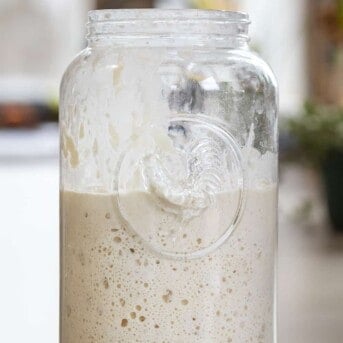
Sourdough Starter
Ingredients
- ½ cup flour, whole wheat or unbleached all-purpose
- ¼-⅓ cup water*, 75°F is ideal
- 1 glass jar, or bowl (about 32 ounces)
- 1 paper towel
- 1 rubber band
Instructions
TO BEGIN
- Start the process by adding ½ cup whole wheat flour and ¼ cup water to the jar. (If you need more flour to reach a pancake batter consistency, you can add up to ¼ cup more.) After letting it rest for 30 minutes, stir the mix with a wooden spoon. Set aside until the first feeding.
THE FIRST FEEDING
- Stir thoroughly and cover with a towel and rubber band. Let sit for 24 hours at room temperature. (Try to keep it in an area of your house that is somewhat warm. Very cool rooms tend to slow the action of a starter.)
- After 24 hours, check the mixture for bubbles. If you see some, add ½ cup all-purpose flour and ¼-⅓cup water. If you don’t see bubbles, give it a stir and let sit 24 more hours.
THE SECOND FEEDING
- Check for bubbles again. If you do see bubbles, remove half of the starter, add ½ cup all-purpose flour and ¼-⅓ cup water and stir thoroughly. Let sit 24 hours.
THE THIRD FEEDING
- Remove half of the starter, and feed with ½ cup all-purpose flour and ¼ cup water, stirring thoroughly. Let sit 24 hours.
ADDITIONAL FEEDINGS
- On days 4, 5, 6 you can feed it 2 times a day, if you want and plan on using it.
- Continue this routine until the starter is consistently bubbling and doubling in size within 8 hours of each feeding.
- From this point (or even on day 5), you can store the starter in the refrigerator and feed it about once per week. When you plan to use the starter, pull it out of the refrigerator 24 hours in advance to feed it and allow it to warm up and grow.
Video
Notes
Did you make this recipe?
You can tag me at @iamhomesteader.
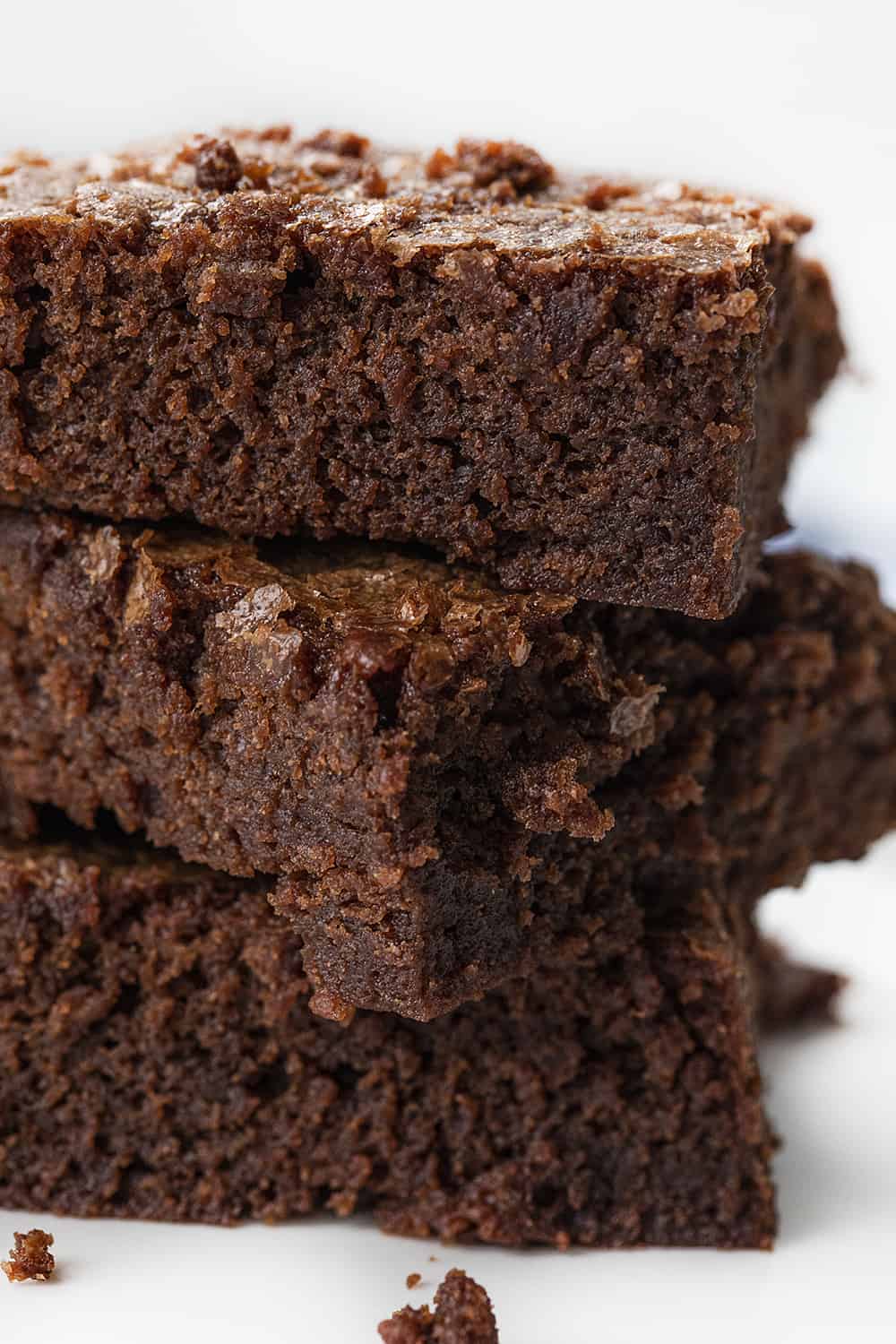
I used this starter to make seriously decadent Chocolate Sourdough Brownies!
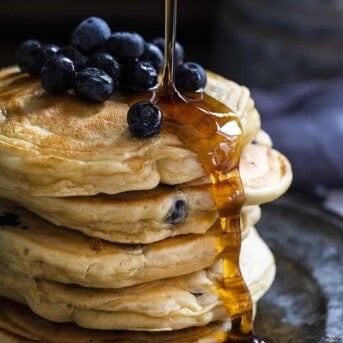
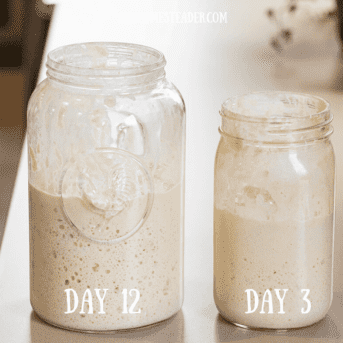
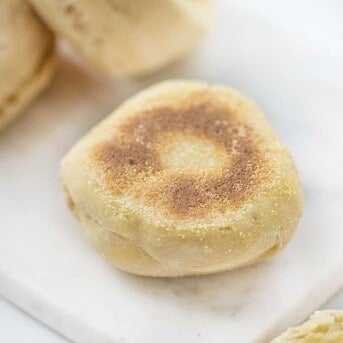
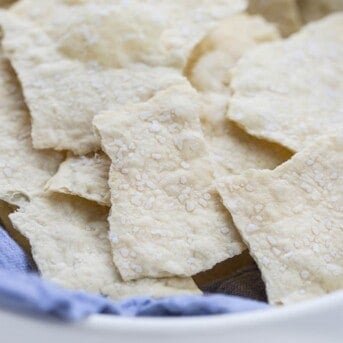
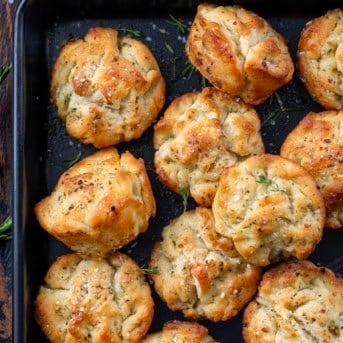


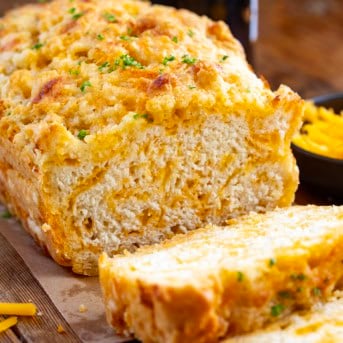
Thank you for sharing and being very descriptive with pictures. I will definitely be trying this. Thank you again
When storing in fridge and feeding once a week, do I leave it out once a week to bubble then put back in fridge? Or do I immediately put it back in the fridge after feeding?
On days 4, 5, 6, what do i add to feed it, like how much flour and how much water?
Here’s what it says in the post! 🙂
‘Feeding’ the Sourdough Starter
With sourdough starters, you will hear the term ‘feeding’. This is simply adding the flour and water to the mixture to keep the microorganisms working. Remember the measurements I told you to get ingrained in your brain? The 1/2 cup flour and 1/4-1/3 cup water is all you will need throughout the ‘feeding’ process.
Day 2: After 24 hours, check the mixture for bubbles. If you see bubbles, add the flour and the water, mixing it well, and let it sit for the next 24 hours. If you don’t see bubbles, do not get discouraged! It sometimes takes a couple of days for the science of it all to work. Just wait another day (or even two) until the first feeding.
Day 3: After another 24 hours, check for bubbles. If you do see bubbles, remove half of the starter, add the 1⁄2 cup flour and 1⁄4-1/3 cup water and stir thoroughly. Let sit 24 hours. Oh, and don’t get rid of the starter you removed! I will give you some ideas on how to use this in the end.
For the third feeding, remove half of the starter (but don’t throw it out!), and feed with 1⁄2 cup and 1⁄4 cup water, stirring thoroughly. Let sit 24 hours. (And yes, you can begin a new starter with the discard! Try adding a new kind of four! Or simply use to make crackers or pancakes.)
On days 4, 5, 6 you can feed it 2 times a day with those measurements that are sure to be memorized at this point😀. Continue this routine (discarding before feeding) until the starter is consistently bubbling and doubling in size within 8 hours of each feeding.
I noticed you don’t discard after the first 24 hours. Other recipes do and it hasn’t resulted in a strong, healthy starter for me. I will try this method and compare. Thank you for sharing this.
Do I feed it right after I pull it out the fridge to use 24 hrs in advance
I’m on my second starter. The first one never took off. The second day of the second one it rose a lot and then fell. It has bubbles and yesterday it had a skin on it so I mixed some of back in and threw the rest out with my discard. This is day three and again it was higher this morning than it is now. I feed it in an hour or so. Any ideas on these issues! I’m also wondering if it’s okay to put it on a different schedule and how should I do that. Thank you so much for your help!
On the discard how do I use
Can you add dry yeast for a loaf of bread
Im on the third day, and this stuff is growing. The quart jar is full of bubbles and almost to the top of the jar. So I’m going to remove half, and feed both halves this 3rd day. Because the starter is doing so well, can i cut it down to one feeding a day. Otherwise there’s going to be an overflow if i don’t. Im assuming this should be ready to make a loaf of bread on the 7th day. I wish i could upload a picture for you to see
Exciting!!
Day 4 and my starter is watery? What do I do? I am feeding 2x a day starting today.
Hello I fed my starter for 2nd time today and it rose to the top of my jar. Can you bake with the discard. I am shocked it took off like it has😳. This is my first time trying this. I am keeping it in my oven, and have the light on, but kerp my starter at the door farthest away from the light.
Yes! In the blog post above there is a list of recipes with links to the recipes that you can use your sourdough discard to bake with. 🙂
What to do with the Discard?
As I said, don’t throw out the sourdough starter that you remove each feeding time to make room for the starter to rise. Just make sure your sourdough starter is room temperature (about 70°F) before using it in baking. Here are some ideas on how to use (and enjoy) the excess sourdough starter.
Sourdough Bread (not until day 6 or 7)
Sourdough Pancakes (seriously SO GOOD!)
Sourdough English Muffins
Sourdough Brownies
Sourdough Pretzels
Cinnamon Rolls (the best!)
Banana Bread
Sourdough Crackers (like saltines)
Sourdough Chocolate Chip Cookies
Sourdough Pasta Noodles
My starter was super watery after the second feeding is it still good
As long as it smells good and is active, its good. You can try adding a bit of flour if you’d like.
On days 4, 5, and 6, when I’m feeding it twice a day, do I discard once or twice each day before feeding?
Can I use the discard in recipes before the seven days or would it not work
It may not work as you do want an established starter. If your starter is thriving, it might be fine!
Thanks for sharing this simple way to make the starter.
Do you discard half the starter on the first feeding?
No. Just feed it
Do you still need to discard half when you feed it once a week?
I would like to know this too 🙂
Yes, you should still discard when feeding, especially if your starter isn’t growing and you’d like it too.
Is the starter supposed to get bigger to where you need to transfer it to a bigger jar? I was just wondering since we discarding half each feeding if it will just stay the same size.
Yes, it should be actively growing. May keep an eye on it and make sure you can see bubbles and activity before discarding.
Can I use all-purpose flour to make a starter.
Absolutely
On days 4, 5 and 6, you do not state to remove half and then feed with flour and water. Do you still remove half on these specific days?
Hi! My starter stopped doubling in size on day 5 after the feeding. It’s now day 7 and it still hasn’t doubled. Should I still continue the process or start over?
As long as it smells good you can keep feeding and discarding. 🙂
How long and at what temp. do you bake the bread for?
Here is the recipe:
https://iambaker.net/simple-sourdough-bread/
Can you use fresh ground flour for the starter?